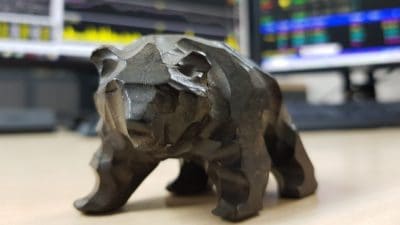Six years on, the credit crunch still fascinates me. And so, when I spotted a recently published book about Royal Bank of Scotland‘s (LSE: RBS) (NYSE: RBS.US) financial collapse, I bought it like a shot.
And Making It Happen, by Iain Martin — a former editor of The Scotsman newspaper — hasn’t disappointed.
It’s all there: hubris, myopia, egos the size of cathedrals, incompetence, and a balance sheet rapidly ballooning towards £800 billion.
And heck, I’ve only reached 2006. The best is yet to come.
Towering ambition
As we all now know, the warning signs were there long before the bank imploded.
Thankfully, I wasn’t an investor in RBS. But if I had been, then Fred Goodwin’s fixation on the bank’s grandiose new headquarters at Gogarburn, close to Edinburgh airport, might have troubled me.
The book’s author, of course, isn’t the only person to quote the old adage about the wisdom of being worried when a chief executive builds a grand new headquarters — and being doubly worried when he puts a fountain in front of it.
And yes, it transpires, Gogarburn had a fountain as well.
Trivia, maybe — but even if only a fraction of the stories about Goodwin and the RBS board were true, here was a bank that had surely taken its eye off the ball.
Faulty signals
As investors, of course, we can’t base our decisions solely on the existence or otherwise of fountains. And whatever we might think about a given business’s corporate culture, it can be difficult for outsiders to drill down deeply enough to make meaningful decisions.
Even attendance at a company’s annual general meeting can’t guarantee that we won’t be blindsided by executives and directors keen to put the best possible gloss on things.
Indeed, when presenting RBS’s 2006 results on 1st March 2007 — just months before the credit crunch hit in early August — Fred Goodwin declared that the bank “faces 2007 with confidence.“
Instead, I prefer to look at aspects of a business’s performance that can’t be so easily swept under the carpet.
Cash is king
There’s a lot of truth in this old adage that investors often overlook.
Sales is vanity,
Profit is sanity,
Cash is reality.
In other words, while sales and profit figures can be manipulated and flattered, there’s no ignoring what’s been happening to the cash held on a company’s books — cash, it must be said, that auditors have to physically verify.
So if, for example, a business is reporting rising profits, but its operating cash flow is down, then alarm bells should be ringing.
There could be a perfectly rational explanation — rising debts, or increased working capital, say — but left unchecked, a steady outflow of cash can only end in one way.
Just ask embittered investors in Enron. Or, for that matter, the high-profile victims of the sub-prime mess that swamped Wall Street.
Debt kills
The accounting term ‘gearing’ has a dry, technical flavour to it. And in truth, a ratio of debt to equity isn’t all that intuitively obvious as a warning sign.
In fact, many investors that I speak to don’t really understand it, or understand vaguely that it’s something to do with debt. (Hint: If that’s you, try thinking of gearing as a ratio of your mortgage against the value of your house.)
Better by far, I think, to look at how affordable a given level of corporate debt is.
To be sure, there’s a handy technical metric that helps here: interest cover. It looks at the amount of interest that a company must pay, compared to its overall corporate earnings. (Using that ‘house’ analogy again, it’s the amount of your monthly mortgage, as a fraction of your salary.)
But frankly, a quick-and-dirty test is even easier: how do debts stack up against annual profits?
And if debts dwarf profits, especially in a smaller and less-resilient business, then it’s time to take a closer look as to why.
2+2=3. Or should that be zero?
Most of us have worked in businesses or organisations that have been involved in a merger or acquisition.
And as such, we know that behind all the bullshi… rhetoric about shared visions and synergies, there’s often an unconscionable mess to sort out.
At RBS in the early days, Fred Goodwin won plaudits for the way that he integrated NatWest into the bank’s operations. But a decent-sized acquisition takes years to bed in, not months — whatever the hype, or whatever the over-paid MBAs say.
The reality is that post-acquisition integration is a risky and lengthy process, and as a result, many mergers and acquisitions turn out to be value-destroying, not value-enhancing.
And the bigger the acquisition — as with RBS’ takeover of Dutch bank ABN Amro — the bigger the risk. Giant-sized acquisitions, in short, can be a real warning sign — especially when combined with other warning signs.
Or, as one of my favourite investors puts it:
Large debts + large acquisitions + poor cash conversion = trouble.
Naturally, these warnings signs aren’t the whole story. But they’re very good starting points.







